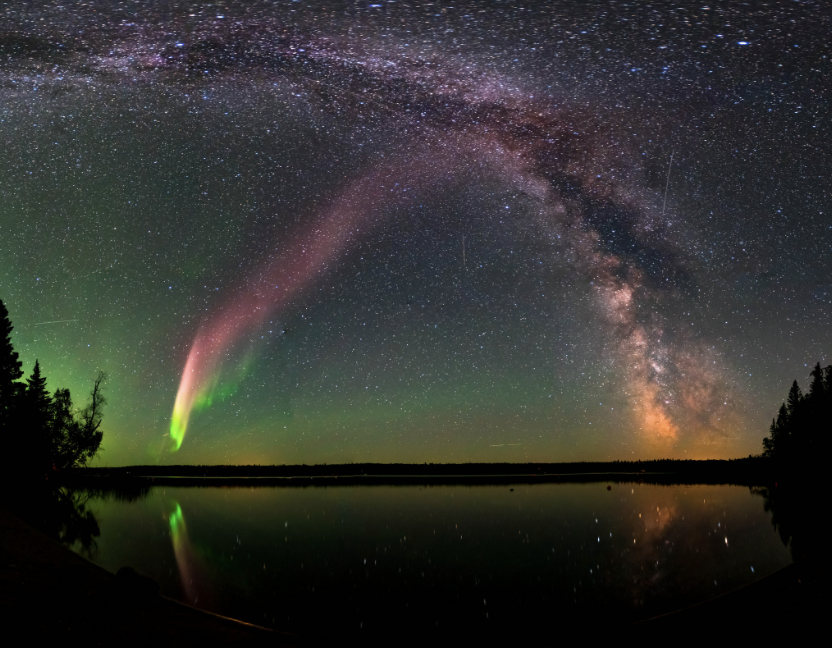Baffling hobbyists and professionals alike, an atmospheric phenomenon known as the Strong Thermal Emission Velocity Enhancement (STEVE) has appeared in the sky above northern Canada.
At first glance, researchers assumed STEVE was the common Aurora Borealis. However, an August 2018 study published in Science Advances American suggests that these atmospheric lights are something entirely new.
Occurring below the standard altitude for an aurora and exhibiting none of the signs of its more common cousin, STEVE is thought to be generated by an undiscovered mechanism in Earth’s ionosphere.
Phenomena like the aurora borealis have enraptured stargazers for hundreds of years, but the cause of these colorful dancing lights has long eluded astronomers. Even now, we only have a general idea of what causes auroras.
When solar wind from our sun interacts with Earth’s upper atmosphere, chemical reactions excite electrons and protons. This results in either electron or proton precipitation, wherein the particles create light by traveling between atmospheric radiation belts and Earth’s ionosphere. Electron precipitated auroras are commonly viewed by stargazers, while proton precipitated auroras cannot be observed by the naked eye.
On the night of March 28th, 2008, the Polar Orbiting Environmental Satellite (POES)-17 passed directly through the path of STEVE, allowing researchers to analyse STEVE’s energy flux.
The American Geophysical Union (AGU) published a recent study on the data collected by the POES-17, which showed no proton precipitation and no high-energy electron precipitation, meaning STEVE must be a new, un-studied type of ‘skyglow’.
In an aurora, protons and electrons are energized by solar winds, while the source of STEVE’s energy is still unknown, pointing to a possible cause for the difference between the skyglows.
Currently the AGU is contemplating two possible explanations for STEVE’s presence. The first considers that STEVE may be the result of high-friction ionic interactions in earth’s ionosphere, located about 500 miles above the surface, similar to another skyglow known as stable auroral red (SAR) arcs.
However, SAR arcs originate in earth’s magnetosphere and migrate to the ionosphere, which STEVE shows no evidence of doing. The second possible cause of STEVE’s emissions is a completely new ionospheric process that scientists don’t know enough about to draw conclusions from.
In the meantime, the AGU is asking amateur auroral enthusiasts and professionals alike to keep an eye out for STEVE, in hopes of gaining more information about the skyglow and ultimately explaining the phenomenon.
Categories:
Tigra Scientifica: It’s a Bird, It’s a Plane, It’s…STEVE?
CJ Gott, News Contributor
January 24, 2019
Photo courtesy of Flickr
Phenomena like the aurora borealis have enraptured stargazers for hundreds of years, but the cause of these colorful dancing lights has long eluded astronomers.
0
Donate to The Tiger
Your donation will support the student journalists of Clemson University. Your contribution will allow us to purchase equipment and cover our annual website hosting costs.
More to Discover








